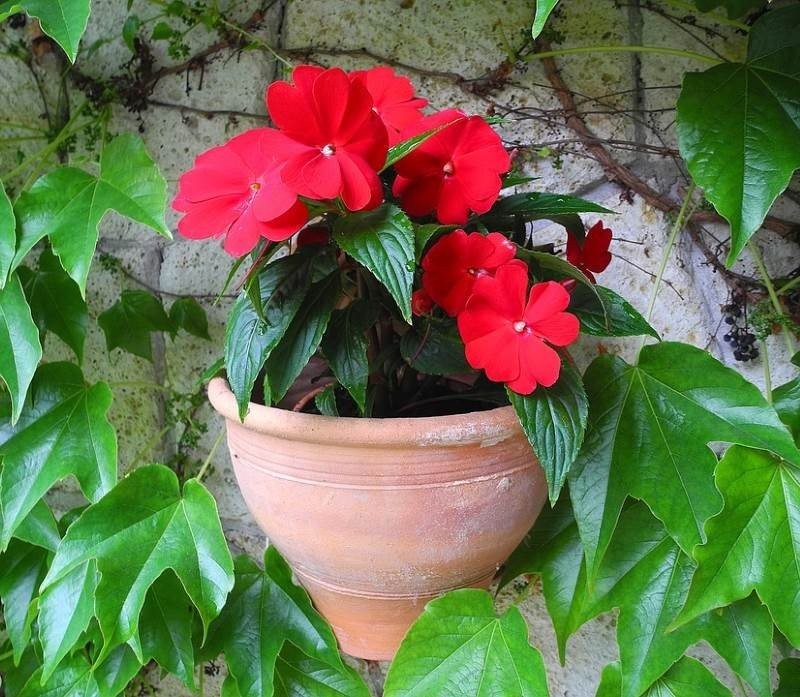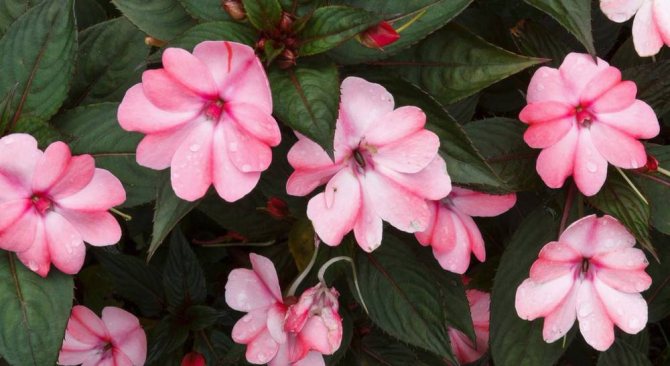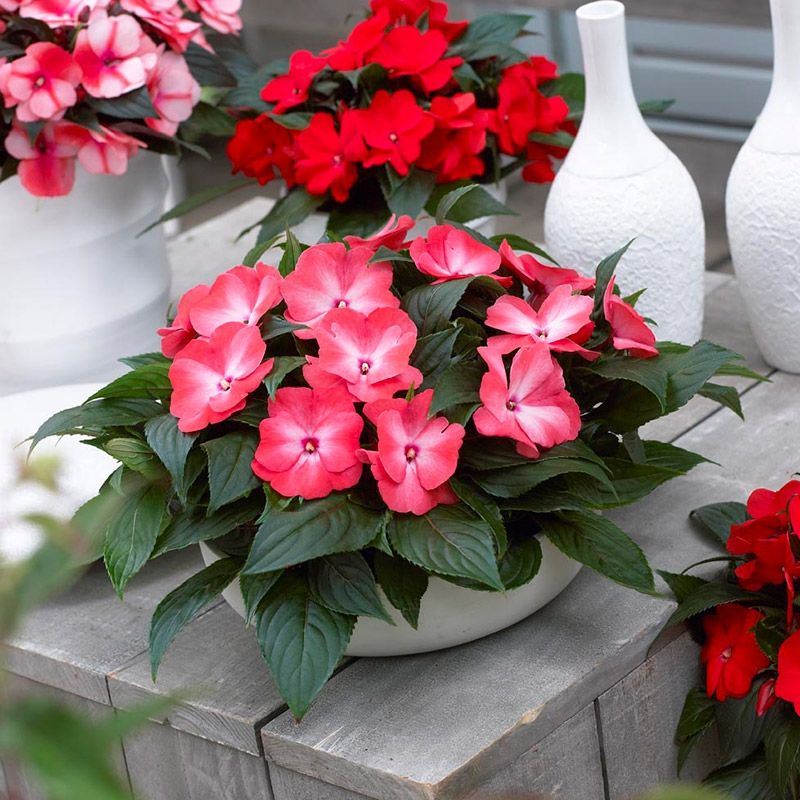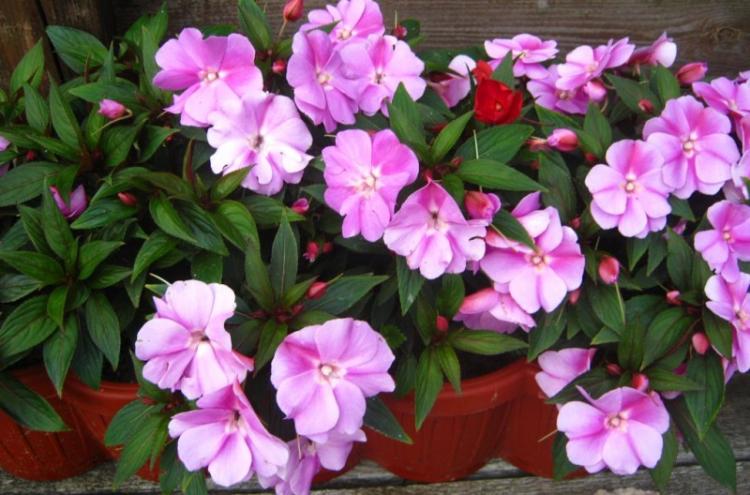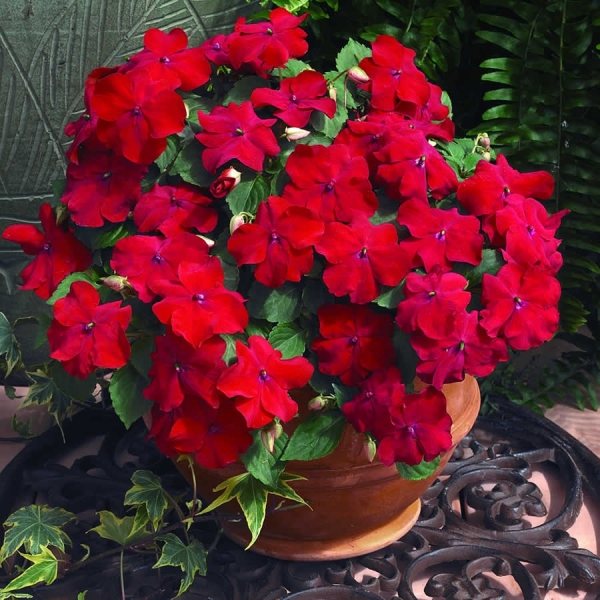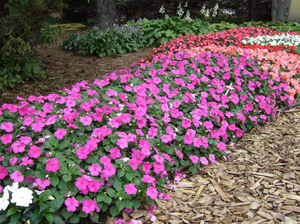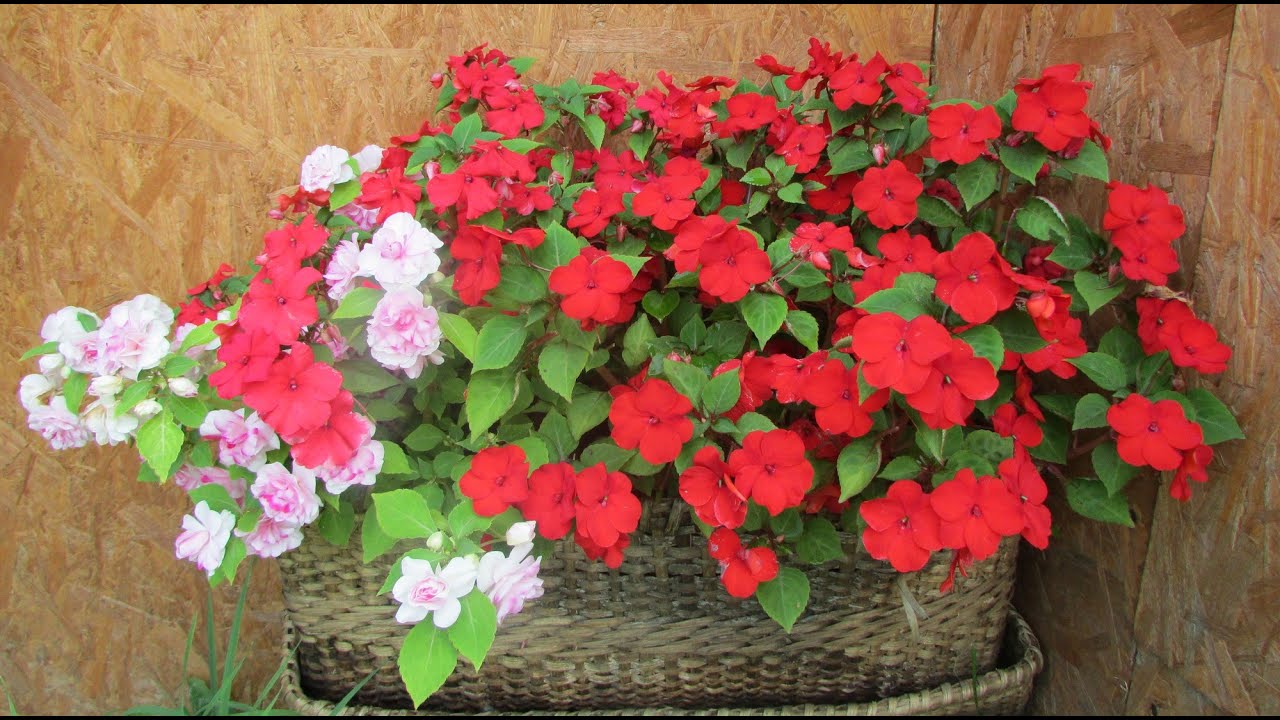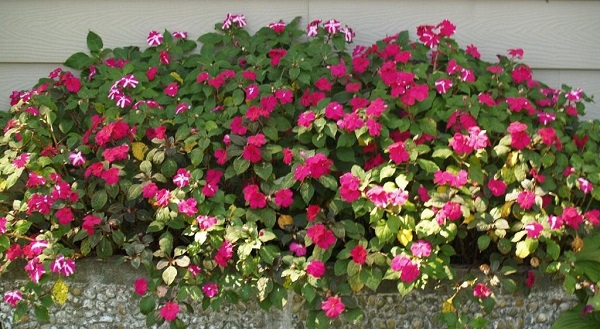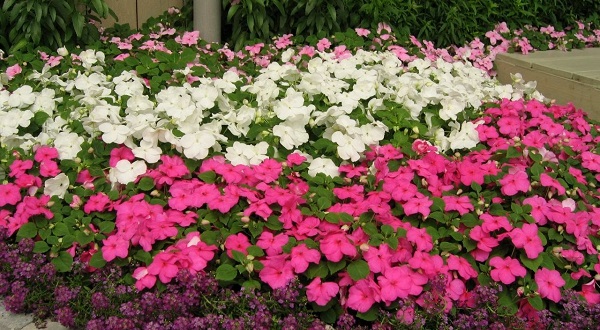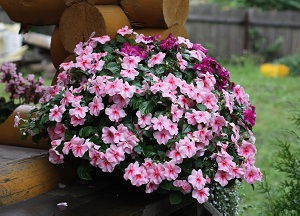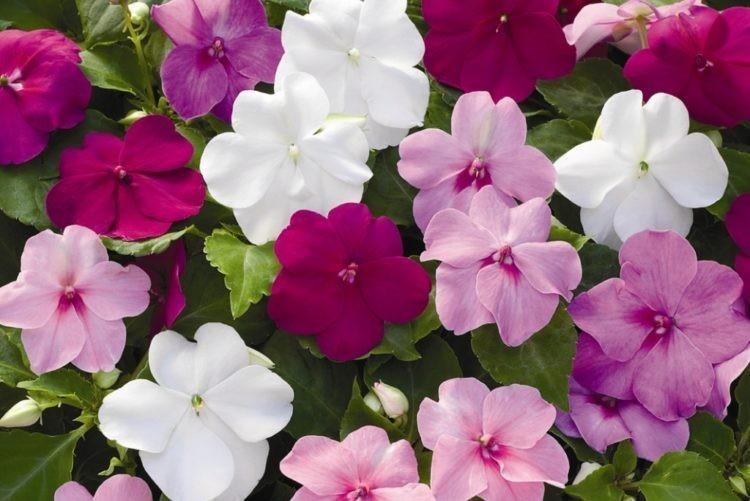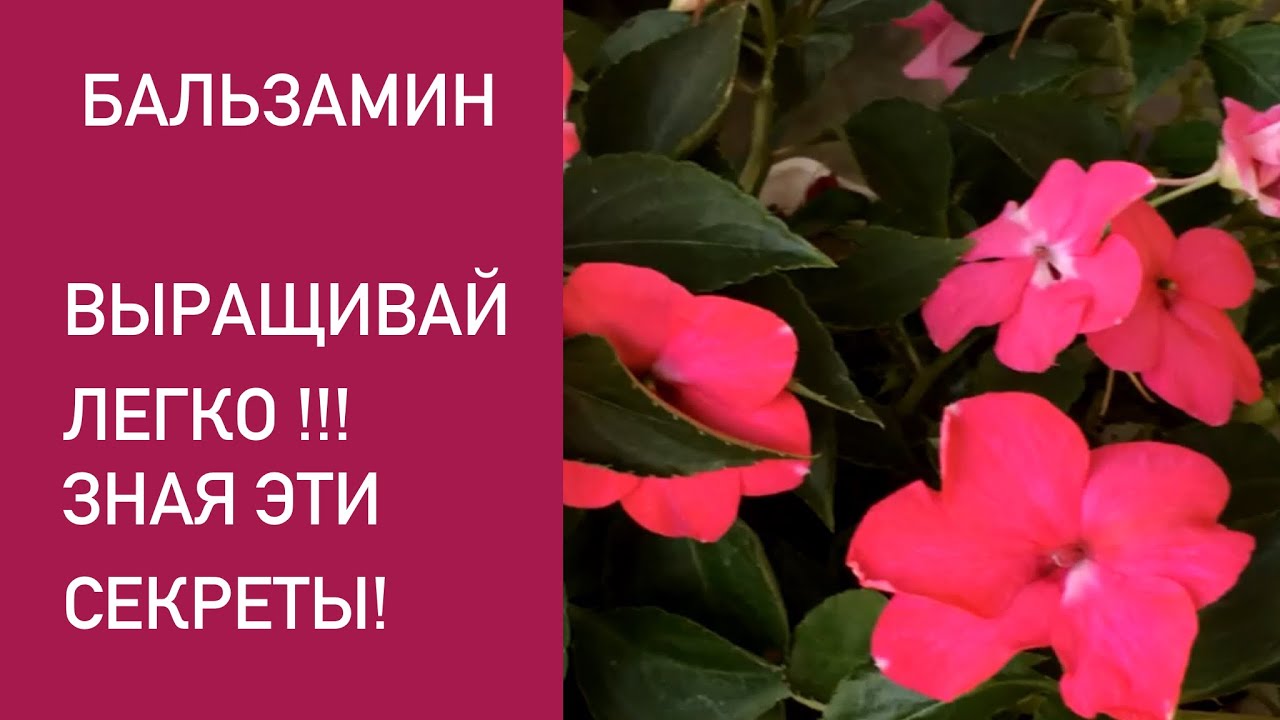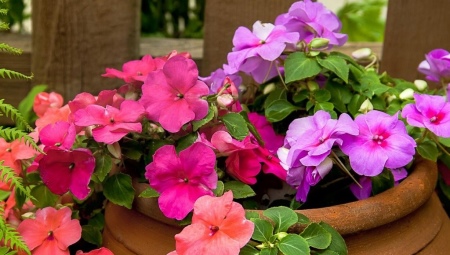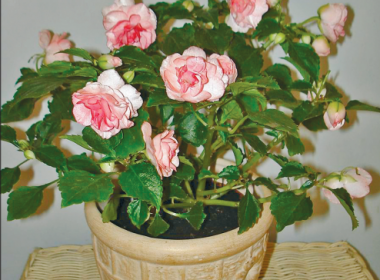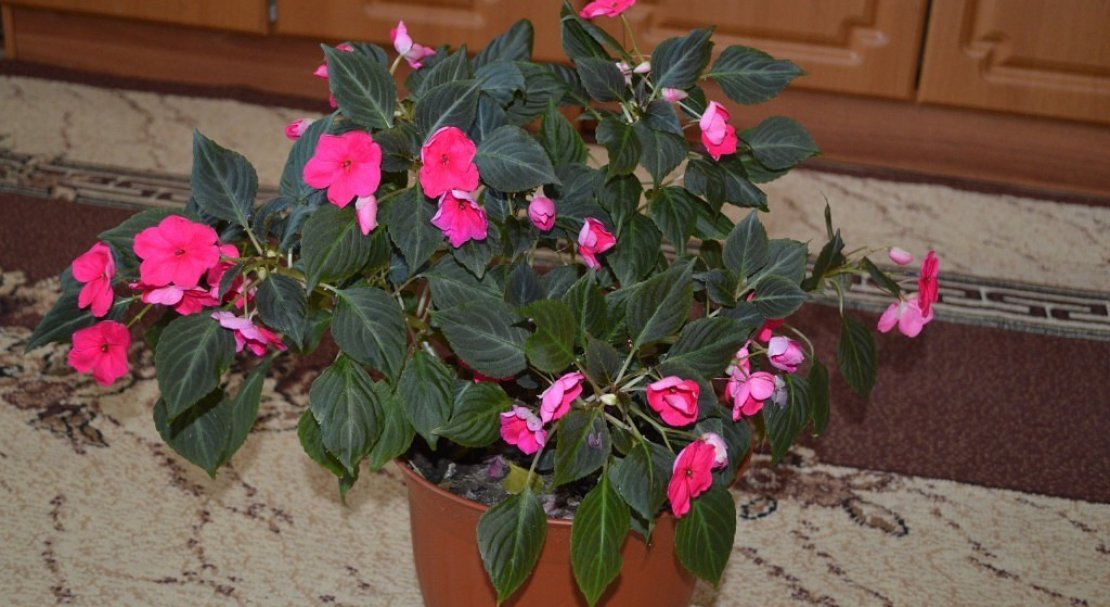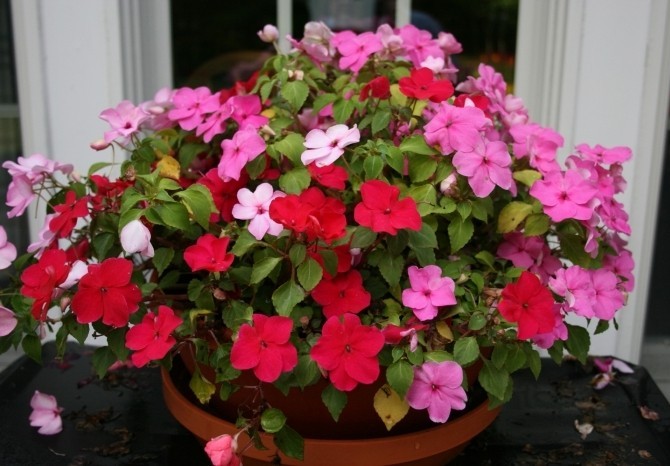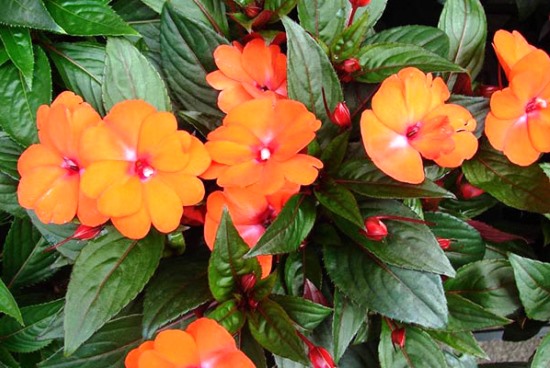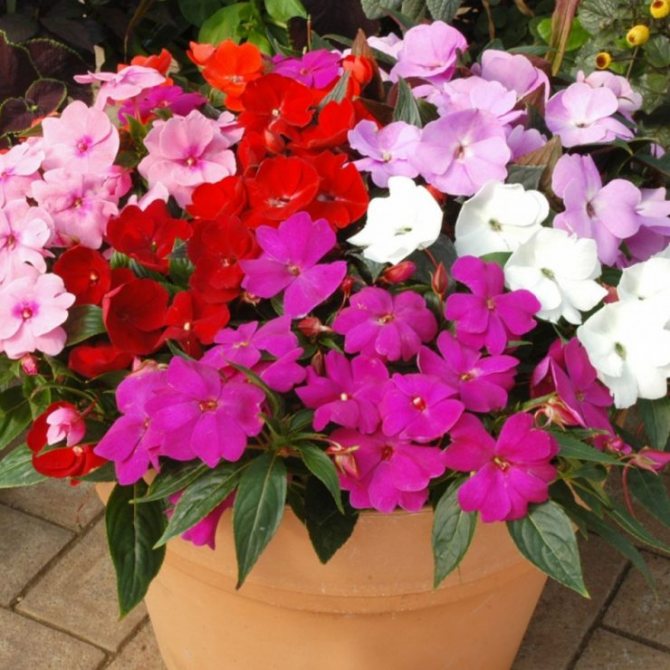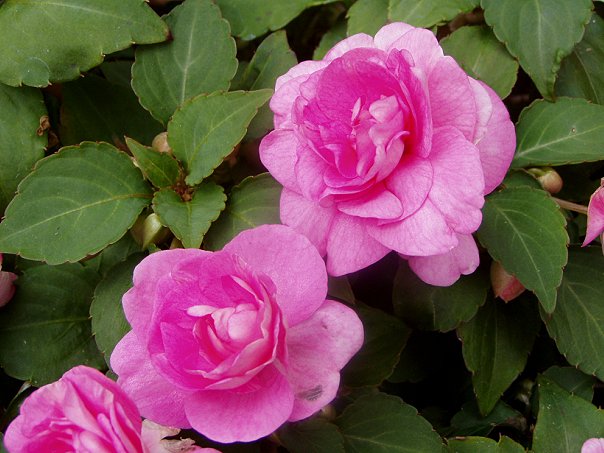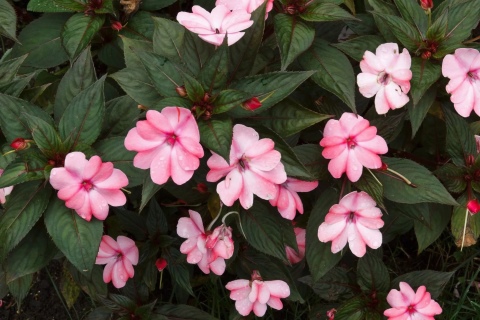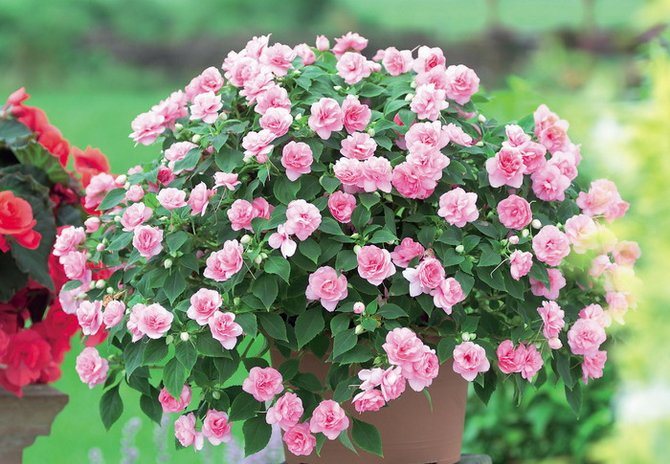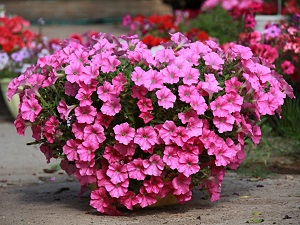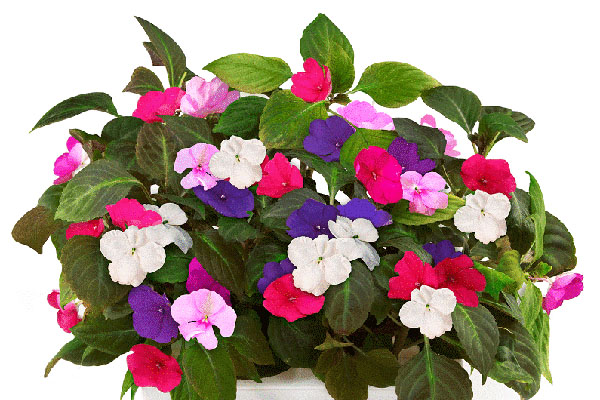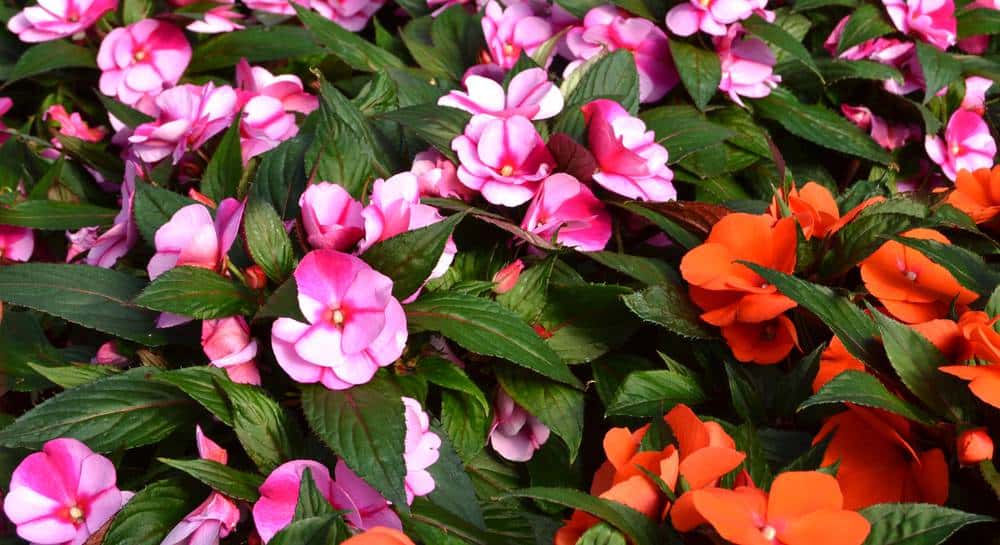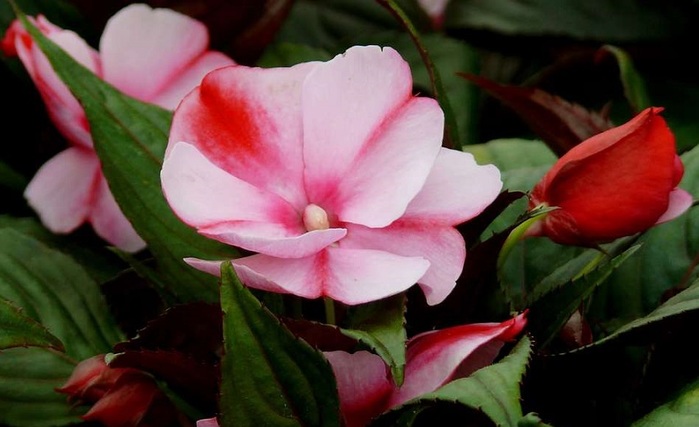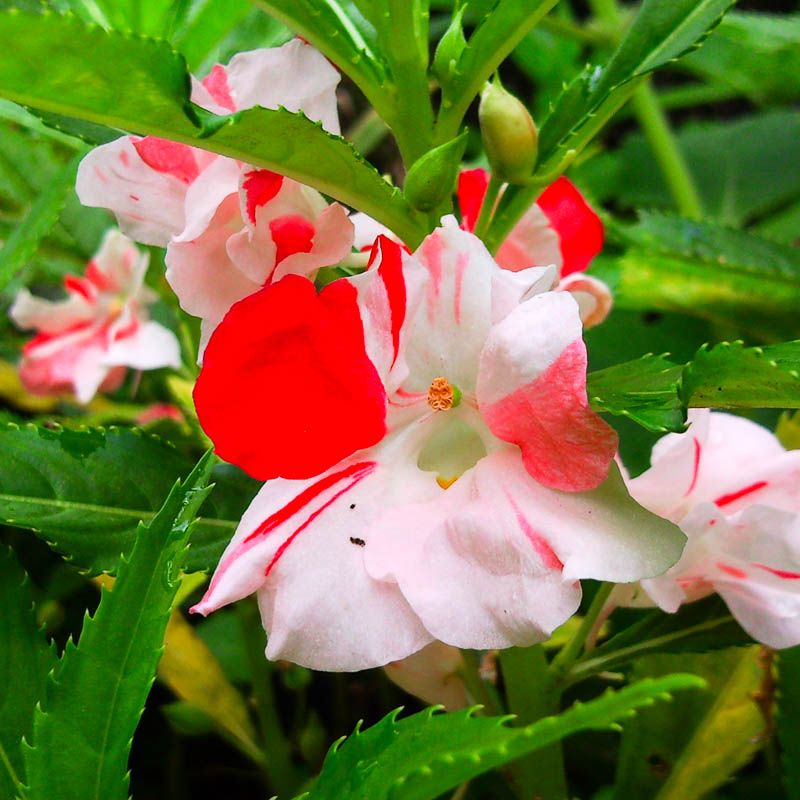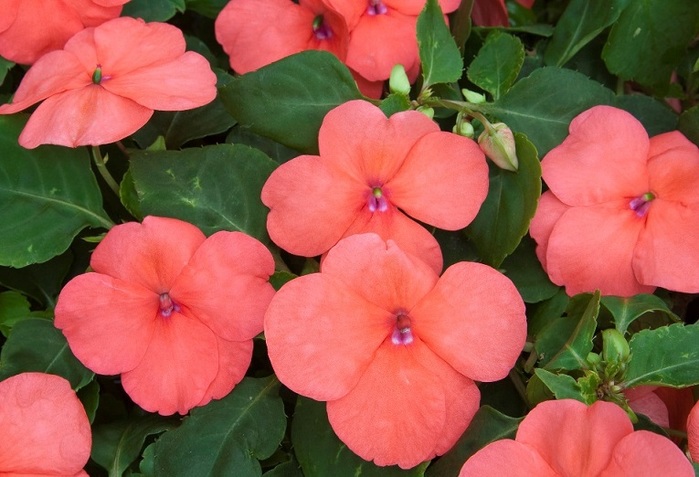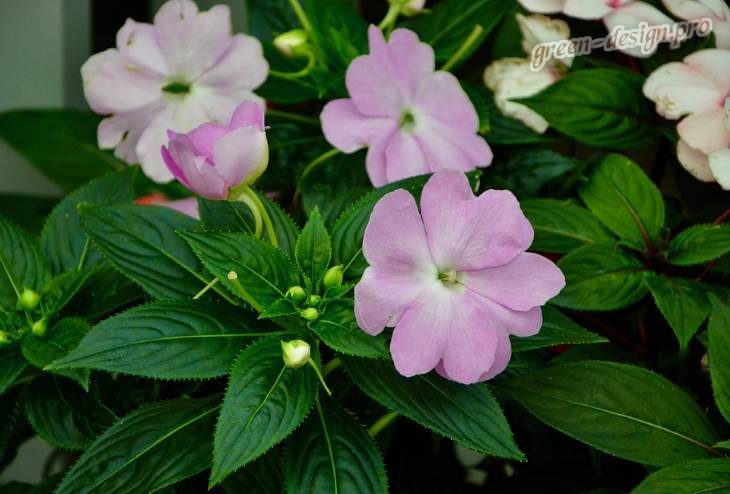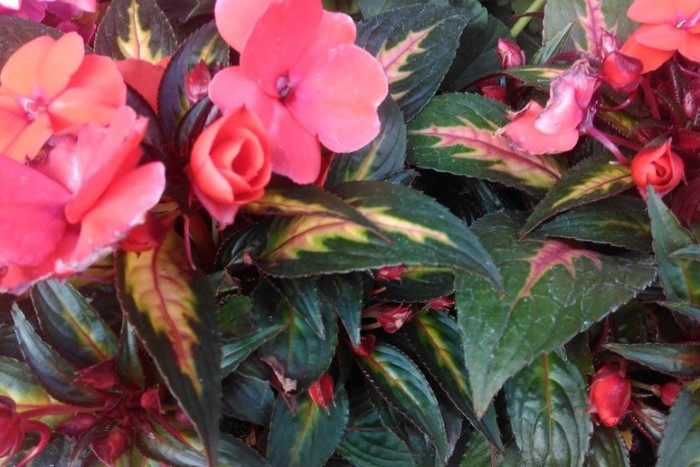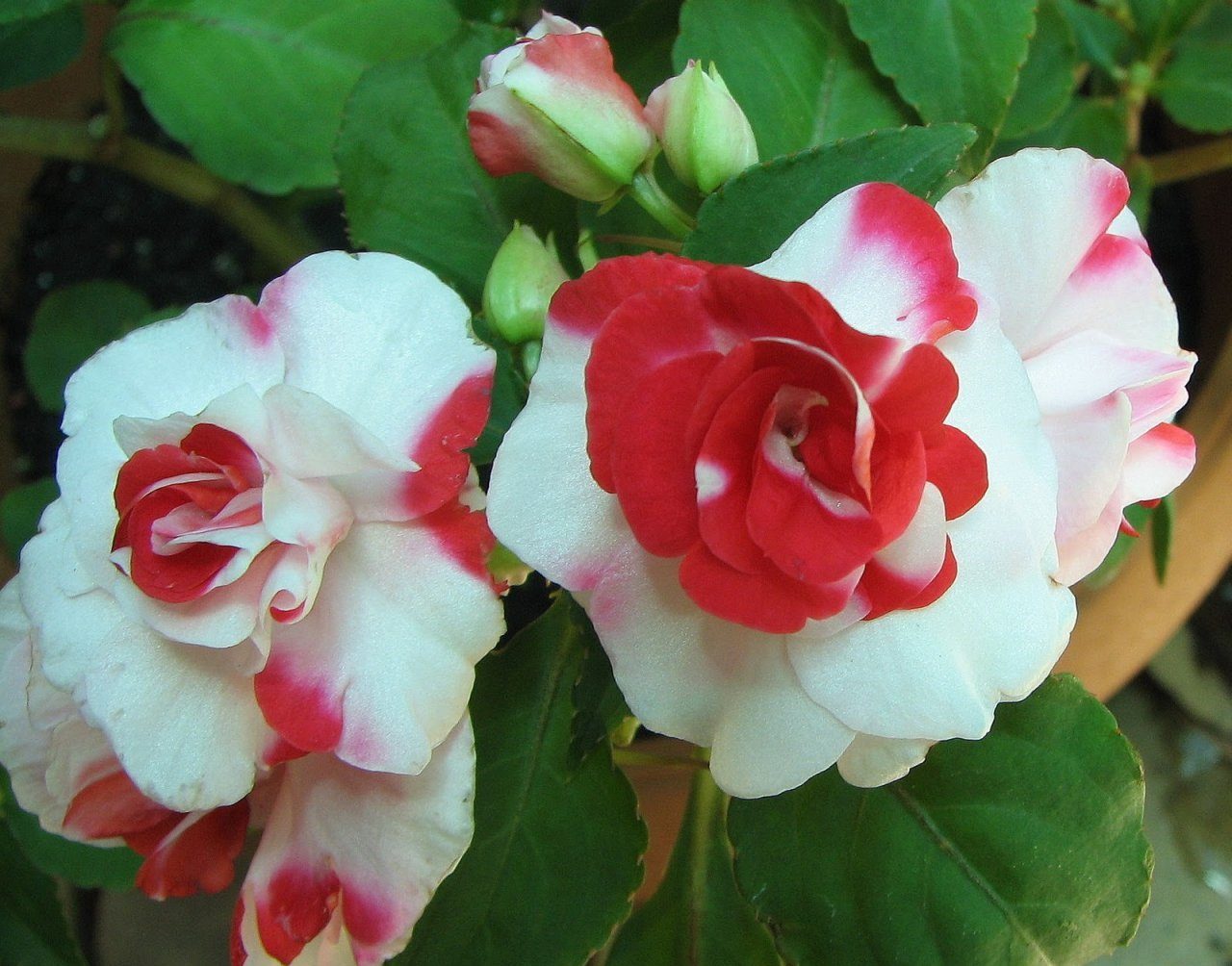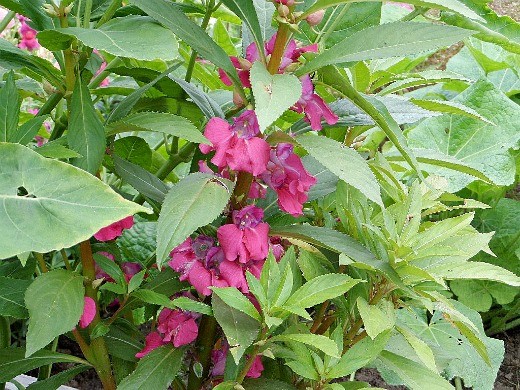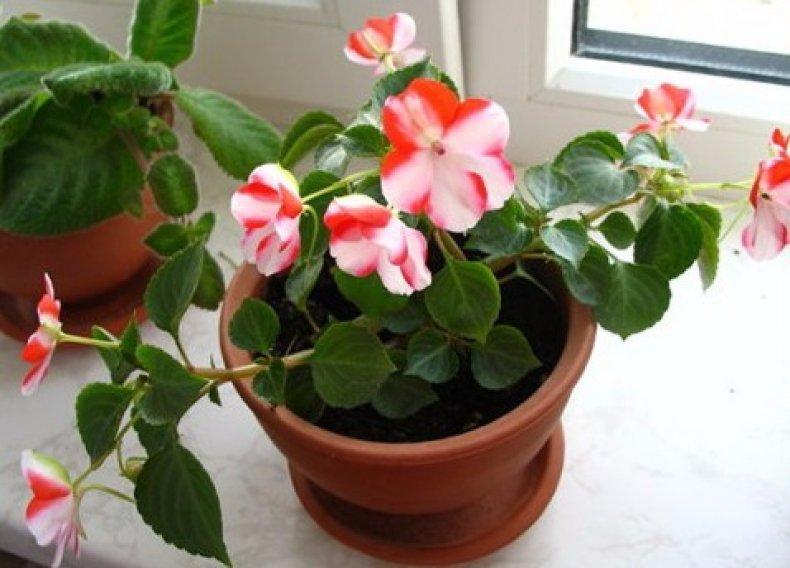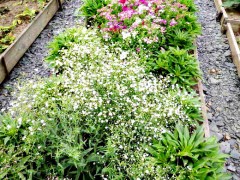Growing indoor balsam from seeds
Before growing indoor balsam from seeds, they should be placed in a weak solution of potassium permanganate for 10 minutes, and then soaked in warm water for a day. Next, you should start preparing the land for planting. Seedlings are very sensitive to the composition of the soil, which should be loose and slightly acidic. A self-prepared mixture of equal parts of the following components is well suited for this: peat soil (2 parts); sheet land (1 part); vermiculite (1 part); river coarse sand (1 part). You can take ready-made soil for seedlings. But it is imperative to add one fifth of vermiculite or sand to it, which will make the soil loose and breathable. This will give the earth the opportunity to dry out faster, and weak seedlings will not die from excessive moisture.
To grow indoor balsam from seeds, a seedling container should be chosen about 7 cm in height or slightly larger. To do this, you can take a plastic container, a wide bowl or pot. It is necessary to make holes in the bottom of the container and provide it with a layer of expanded clay 2 cm thick
This precaution will prevent water from trapping in the soil and will save the seedlings from root rot. On the eve of sowing, you need to fill the container with earth and spill it with a solution of "Fitosporin", which improves the microflora of the soil and protects against such a serious problem as the "black leg"
Pour fertile soil into a container for seedlings, moisten and compact it. Place the seeds at a distance of 2 cm from each other and sprinkle lightly with earth. Cover the planting with a plastic bag on top and put it in a bright place. If you want the seeds to sprout faster, illuminate the seedlings with a lamp.
After about 3 weeks, the first shoots appear
During this time, it is important to adhere to the following actions: As often as possible, ventilate the crops and shake off the accumulated condensate from the "greenhouse" in order to protect the seeds from air stagnation and fungal infection. Moisten the soil from a spray bottle, preventing both overdrying and waterlogging of the soil
To supplement seedlings with a phytolamp in the morning, in the evening and on a cloudy day
When the first shoots appear, carefully sprinkle moist soil on young bare roots.
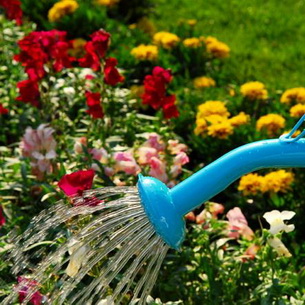
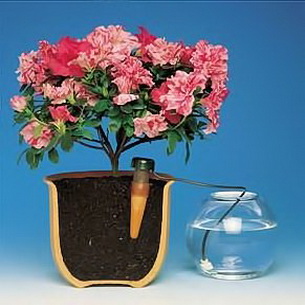
When watering seedlings, it is important to ensure that water does not fall on the root collar of a young plant in order to avoid rotting. Seedlings develop quickly with proper care
When the first true leaves appear, you can dive the sprouts into separate containers. Small plastic cups are great for this. It is important not to forget to make drainage holes in them and put some expanded clay on the bottom. If the seedlings are too elongated due to lack of light, when diving, the lower parts of the long stems should be deepened deeper.
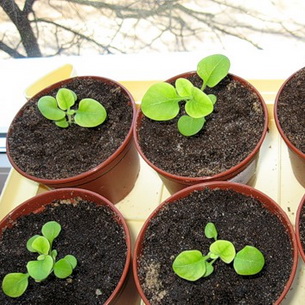
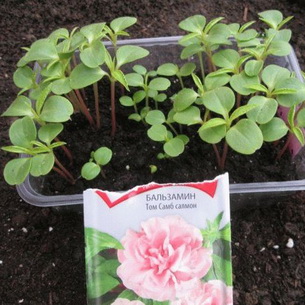
It is recommended to hold the cups with seedlings in the "greenhouse" a little more, accustoming them to fresh air gradually. With sufficient light and regular watering, seedlings become strong and stocky, starting to bush early. If young plants do not want to branch in any way, you need to pinch the tops for the active formation of side shoots. The more new shoots grow, the more luxuriant the bush will grow and the more abundantly it will bloom. When young plants grow noticeably and their roots are completely entwined with an earthen ball, you can transplant them into new permanent pots and wait for a bright scattering of delicate flowers to appear.
Next, you will learn how to care for indoor balsam: feed, prune and transplant.
You can see a photo of growing a houseplant balsam from seeds below:
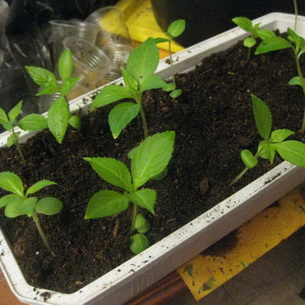
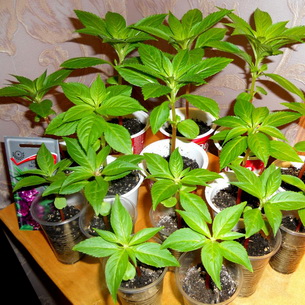
Benefit and harm
We grow balsam to decorate apartments, dachas, streets. But the forest flower is also used in folk medicine, mainly in the Caucasus, Asia, Siberia, despite the sufficient content of poison in it.
In no case should the flower be used as a medicine for pregnant women and children in any dosage. It is very dangerous.
Any tincture of this plant is contraindicated for people with gastrointestinal problems.
Beneficial features
Despite the "toxicity" of forest balsam, in minimal doses it is beneficial and has healing properties.
- The stems and leaves contain tannins. Decoctions, infusions of this plant are recommended for diseases of the bladder, kidney stones. For rheumatism, decoctions are used both internally and externally in the form of baths.
- Leaves, previously crushed, are applied to wounds, ulcers, as they have an anti-inflammatory effect. Well, such lotions help with hemorrhoids. For open wounds, juice squeezed from the plant can be used.
- The flowers are effective as an anti-inflammatory agent, as it has been proven that during flowering the plant releases large amounts of vitamin C.
Forest balsam is a poisonous plant. Overdose and misuse will do more harm than good. Infusions and decoctions are recommended to take no more than two tablespoons per day.
Is it possible or not to keep it at home?
Balsam is great for keeping it in apartments, including in the children's room, on the balconies, as well as in kindergartens and schools. I wonder what the flower was for. Previously, it was believed that in a house where there is a touchy person, there will be love and prosperity, good luck in business. This beautiful flower was a symbol of masculine strength.
When and how to harvest your seeds
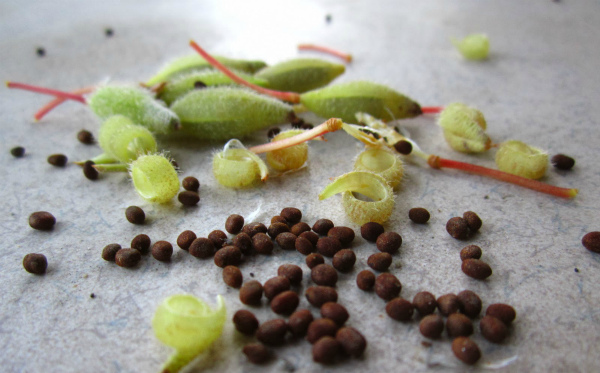 The specific feature of achenes was mentioned above, therefore, when collecting seeds, you need to adhere to a certain technique:
The specific feature of achenes was mentioned above, therefore, when collecting seeds, you need to adhere to a certain technique:
- after waiting for the balsam fruit to ripen and dry (and this falls on October), the florist prepares special bags;
- putting a small bag on the achene neatly, lightly touch the box; as a result, the material is ejected, but the seeds will not fly away beyond the bag;
Another method can be applied:
collection is appointed for the early morning;
holding the ripe box carefully with your fingers, tear it off the stem;
achenes are rubbed with fingers and this powder is placed on a saucer covered with gauze;
when the seeds are dry, they are folded in a paper bag, in which they are stored until the next season.
The described method requires skill and accuracy. If there are no such skills, then it is better to buy ready-made seeds from the dealer. Balsamic seeds do not lose their properties for 8 years.
How to care for a balsam indoor flower
Location. Once balsam could be found in almost every apartment. Adults loved him for its beauty during flowering and ease of care, and children feasted on the petals of pink and white flowers with a pleasant, sour taste.
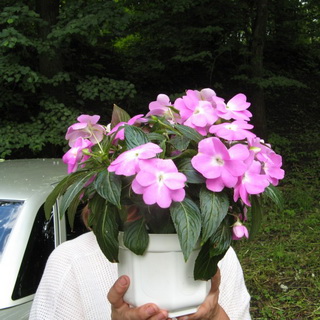
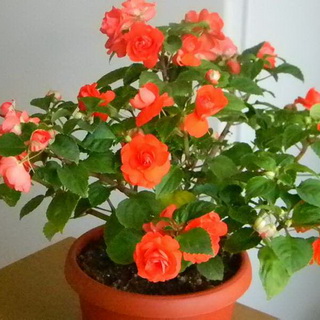
It is not difficult to provide decent conditions for growing balsam, because it is indeed a very unpretentious plant. It feels great not only in the room, but also outdoors. Therefore, in the summer it can be safely transported to the garden plot or taken out onto the balcony.
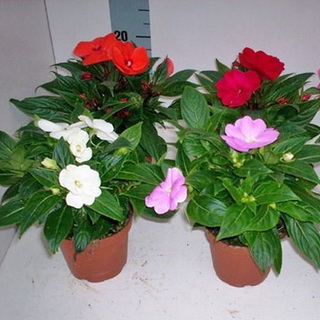
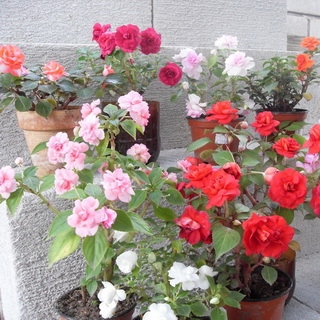
Balsams develop well on any, even northern windows; they only need shading from direct, hot sunlight on the southern windows. At high temperatures and a lack of light, plants shed their leaves.
Sultan's light-loving balsam, after gradual hardening, can be placed in open places, and Waller's shade-tolerant balsam - in places protected from the sun. The plant should be removed from open ground long before the night cold.
The soil. It is better to plant them in pots commensurate with the root system, filled with a loose nutritious soil mixture of leaf, greenhouse soil and sand (4: 2: 1).
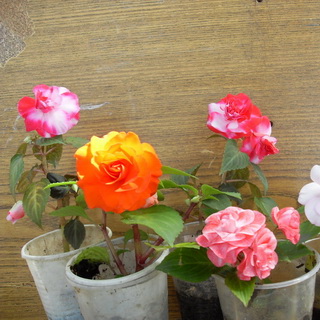
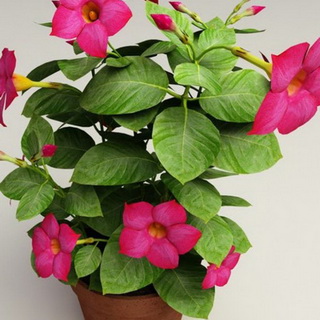
Balsam loves to grow in small containers, so when transplanting it in the spring, choose a flower pot that is only slightly larger than the balsam root system.
Top dressing. When caring for a flower, balsam in home dressing complete mineral fertilization should be done at least twice a month. In summer, they should be watered abundantly and fed every 10-15 days with a mullein (1:10) or a 2% solution of complete mineral fertilizer.
Watering. During the growing season, when growing and caring for balsam, regular watering is required, especially during dry periods. In winter, they are kept at a temperature of 14-16 ° C, watered less often, without flooding, since balsams do not stop growing during this period.
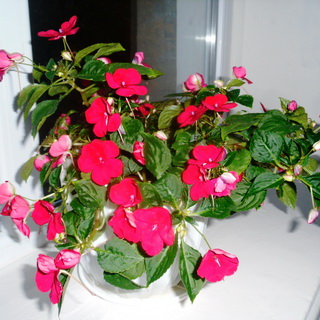
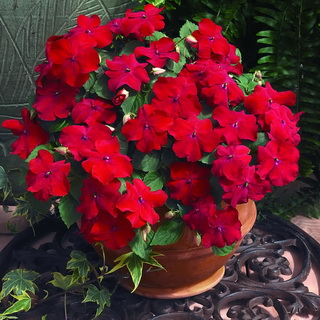
And how to care for indoor balsam flowers, which belong to New Guinea hybrids? They must be pinched. Frequent loosening and weeding are required.
If your plant sheds yellowed lower leaves and does not flower, it means that it lacks light. Move it to a brighter place.
If the leaves of the plant fall off during the winter, it means that your plant is cold - put it in a warmer place.
If the root collar of the plant is covered with black spots, pay attention to watering. You are probably waterlogging the soil
Stop watering the plant until the soil is dry.
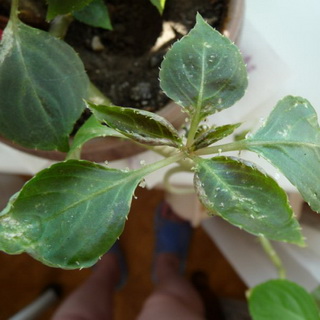


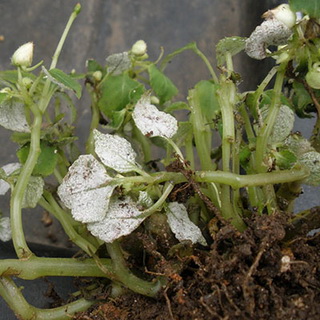
The main pests when growing a balsam flower are aphids, spider mites, felt and nematodes.
Watering
Balsam reacts positively to high humidity, but will not tolerate drought. By maintaining optimal moisture for the soil, you will achieve long and beautiful flowering. Watering the Amazon lily will have to be 2 times more often in the spring than in the fall.
For irrigation, use only soft water at room temperature. Do not overdo it with watering, otherwise you will achieve rotting of the root system.
Frequent watering in small portions is the best option. In a situation where the plant has not been watered for a long time and has dried up, it is not at all critical, Balzamin in this case can be reanimated. The pot with the plant just needs to be lowered into a tray filled with water and left in this state for a couple of hours.
Place a container of water next to the flower to increase the humidity in the air during the warmer months. When choosing a pot, keep in mind that a pot that is too large will not do the trick. If the situation is reversed, the plant will actively grow greens until the roots fill the space of the pot.
If you do not have a small container for planting, then several bushes can be planted in a large container at once. Do not forget to cover the drainage layer 1/3 of the entire soil of the pot. The container must have through holes, otherwise the plant will die.
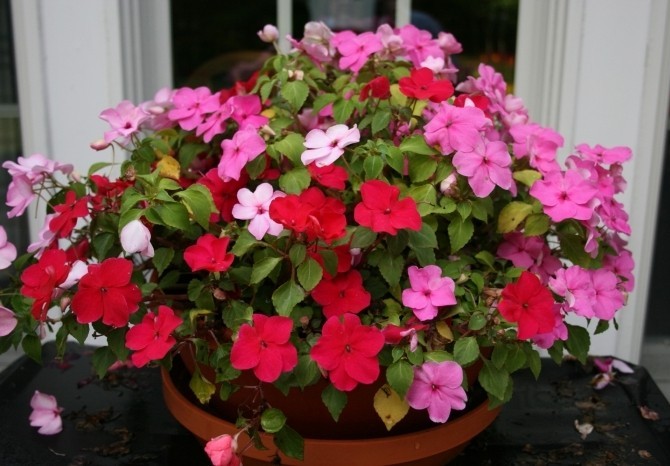
Planting and caring for garden balsam
Despite the fact that in the wild, touch-me-not can grow and develop rapidly, garden varieties of balsam require care and adherence to agrotechnical rules that contribute to the lush flowering of the plant.
It is important not only to maintain the sowing time, but also to choose the optimal location on the site, to protect it from possible diseases and pests
When to sow seeds
For growing garden balsam from seeds, the third decade of March or early April is the time of sowing for seedlings. Dates vary depending on the climatic conditions of the region. So, in the southern regions, the procedure is postponed to an earlier date - the beginning or mid-March. In the Siberian, Ural region, in the north-west of the Russian Federation, the optimal time is the first week of April.
Sowing directly into the ground is carried out only if the air warms up to 25 ⁰С.
Site and soil requirements
The western or eastern part of the site is the best place for planting garden balsam. This position allows you to alternate periods of morning sun with soft shade at noon.
In bright light, a large number of buds are laid, but in the heat, balsams can get burns. During this period, the plants will have to be shaded. The location on the north side leads to an increase in green mass and a decrease in flowering.
When sowing seedlings for garden balsam, loose soil with good moisture and air permeability, neutral pH is selected. For this purpose, several components are mixed: garden soil, sand and peat in a ratio of 4: 1: 4.
Ready-made universal soil for flowers, which can be purchased at a specialized store, is quite suitable for growing seedlings.
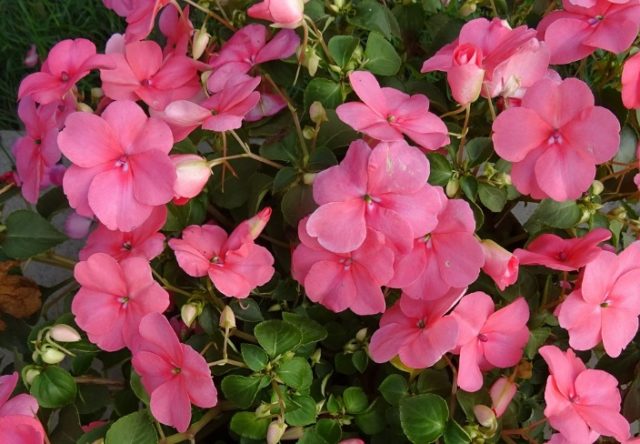
To stimulate budding, the shoots are pinched, and the faded inflorescences are removed
Planting garden balsam seeds
Sowing requires containers, the shape and volume of which do not play a special role. The optimal height of the box is 8-10 cm, the width depends on how many seedlings you need to get. Cassettes, flower pots, plastic glasses are quite suitable for this purpose. Before filling them with soil, it is worth disinfecting the container with a solution of potassium permanganate, and calcining or freezing the soil mixture.
Garden balsam seeds must also be disinfected before sowing by dipping them into a solution of phytosporin, chlorhexidine or aloe juice for 30 minutes. To accelerate the germination of seeds, after dressing, they are washed and immersed in a solution of a growth stimulator ("Epin", "Zircon").
Having prepared the soil, containers and seed material, proceed to planting seeds:
- Drainage is placed at the bottom of the container.
- Pour soil mixture on top.
- Moisten the surface with warm water.
- Spread the seeds at a distance of 2-3 cm from each other.
- Close the container with a transparent lid, glass or foil.
A good solution for growing seedlings is to use peat tablets.
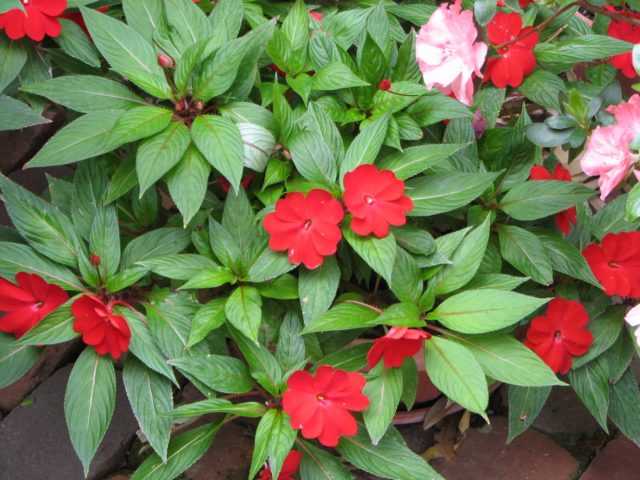
In the bright sun, touch-me-not flowers can fade.
Follow-up care
The main rule of growing healthy garden balsam seedlings is to create optimal conditions and proper care. For this purpose, the container with seeds is placed in a warm (22-25 ⁰С), lighted place. In the dark, seeds located on the surface of the soil will not be able to germinate. Every day you need to control the degree of soil moisture and, if necessary, spray it. If condensation forms on the lid or glass, it is removed and the container is ventilated. After the appearance of the first shoots, the shelter is gradually removed - first for 1 hour, then the time is increased and, finally, they get rid of it altogether.
Seeds germinate unevenly. After 2 weeks, the first shoots appear. At this moment, the seedlings are transferred to a room with a temperature of +18 ⁰С, the daylight hours are extended to 12 hours with the help of additional lighting, the seedlings are carefully moistened under the root with warm, settled water.
The grown garden balsams are planted in open ground after the threat of frost has passed.
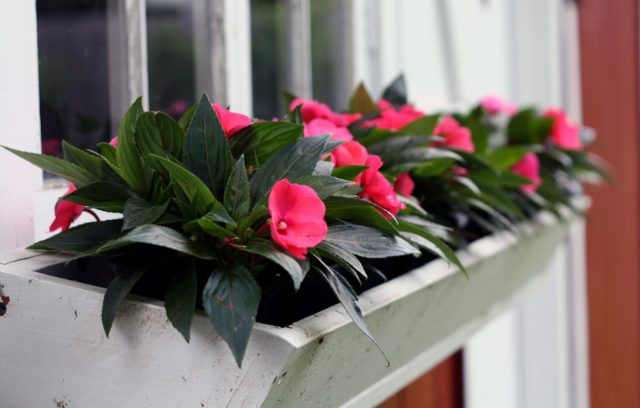
To protect against mold, the soil under the plants is mulched with needles or sawdust
Soil and fertilizers
To maintain the correct development of the plant, it is important to choose the right mixture of soils. A nutritious yet light earth will be ideal.
In flower shops, such soil is sold under the guise of soil for flowering indoor plants, but it is also possible to prepare it yourself and it will be even better.
For an ideal composition, you will need humus, sand and turf, all in equal proportions. After thorough mixing, add another half of the peat. The resulting land will have enough useful components for the plant and its development.
In winter, Balsamin will also need fertilizers, you should not give up them, as with other flowers during cold weather and a dormant period.To keep the plant in good condition, a small amount of feeding is enough just once a month.
In winter, it is good to use nitrogen fertilizers for this bush so that the green mass grows. More thorough feeding begins at a time when the plant comes out of dormancy and begins to give new shoots and sprouts.
Care features
Vanka Wet is a non-capricious plant. It does not require any special care, only a minimum of attention. The main thing is to ensure that Impatient has regular watering and timely fertilization.

Watering
You need to water Touchyou regularly, make sure that the earth does not dry out. Balsam instantly reacts to a lack of moisture - its leaves curl, flowers droop. With insufficient watering, the plant can shed flowers and buds.
Spraying
It is advisable to irrigate balsam every other day with cold water. This procedure will save the plant from the spider mite and saturate the Touch with moisture.
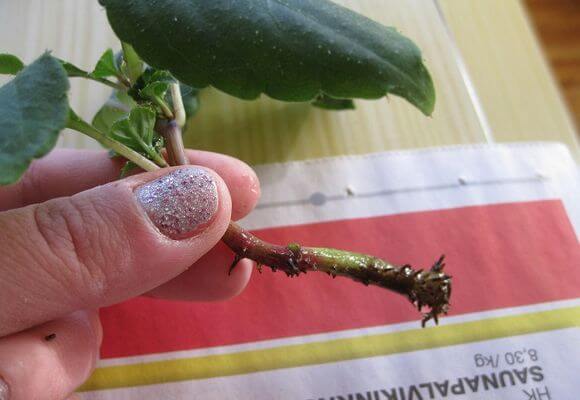
Pinching and trimming
It is necessary not only to look after balsam, but also to pinch it correctly. When the plant grows a little, it is advisable to shorten its top. The balsam will no longer stretch upward, but will begin to form side shoots. The plant will take the shape of a spherical, compact bush. True, for this you need to constantly cut off the stems that are too elongated.
Top dressing
For abundant flowering, Impatient needs to be fed 1-2 times a month with complex fertilizers for flowering plants.
Hardening
Usually Impatient, sown on seedlings, is hardened before being transplanted into the street. The room where the seedlings grow is regularly ventilated. In May, in warm weather, boxes with seedlings are taken out into the sunlight for several hours.
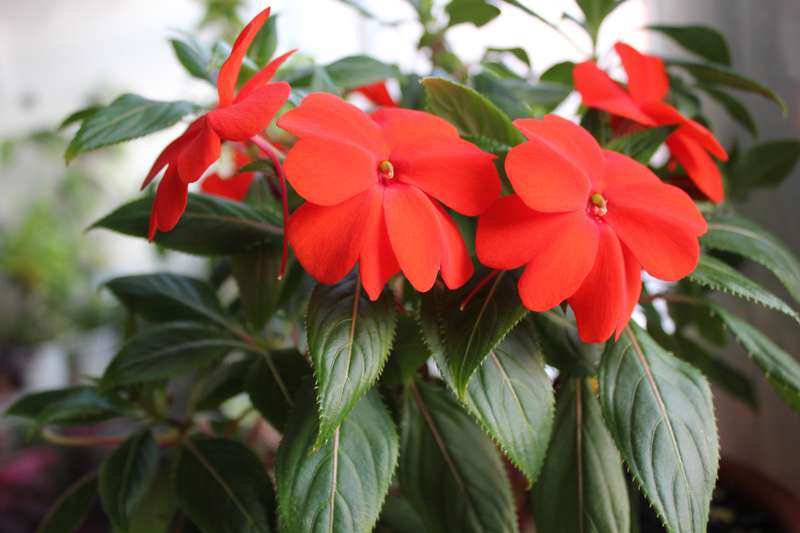
Wintering
In the fall, the yellowed and fading garden balsam is cut off, the roots are dug up and removed from the flower bed. Save the bush in winter will not work. With the onset of frost, he will quickly die. The next season, a new plant is sown.
Pruning
Balsam should be pruned in the spring or early summer so that the plant takes the form of a compact, low bush. Usually at the stem, 30-40 centimeters long, pinch the top. Balsamin begins to actively form lateral shoots.
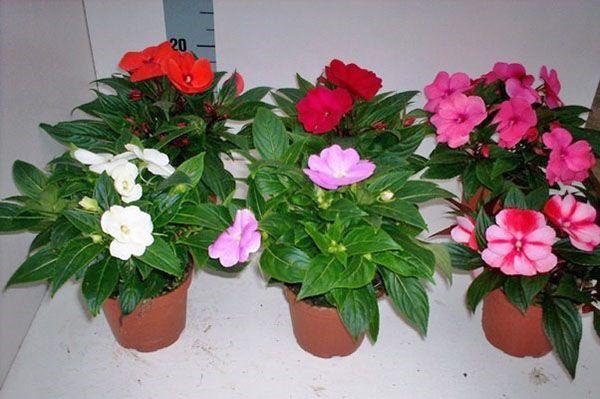
Soil and containers for planting balsam
The balsam substrate should be light, peat-based, but closer to neutral acidity characteristics. Perfect for plants, mixtures of garden soil with peat, coarse sand in equal parts or ready-made substrates for seedlings, to which you can additionally add 1/5 of the sand.
Some gardeners recommend sowing large types of balsam in a soilless mixture of peat and sand or peat and perlite (2 to 1). The optimum pH for balsam is 5.5 to 6.3. Balsam does not like fresh organic matter; young seedlings react especially badly to compost. The texture of the soil should be loose, light, permeable.
 Balsam seeds. Susan howard
Balsam seeds. Susan howard
A prerequisite is disinfection of the substrate before sowing. The disinfection procedure can be carried out with ordinary boiling water, and a weak solution of potassium permanganate, and fungicides. For balsams, the soil is sieved.
Breeding features
Terry balsam is propagated by both seeds and cuttings.
Propagation by cuttings
Prior to this, a cutting with 2-3 internodes is taken from a healthy mother plant and placed in a glass of water for 2 weeks.
After the sprout has released the roots, transplant it into a small pot. Such a flower will be an exact copy of the mother plant, it will bloom more often.
Sowing seeds
This happens in late February - early March. Algorithm:
- The seeds are soaked in a weak solution of potassium permanganate for 15 minutes.
- Sow in a specially prepared container with moist soil.
- The seeds are covered with sterile sand (layer thickness 3 mm).
- The container is covered with a plastic bag.
- Then it is placed in a warm place until shoots appear.
- Seedlings are moistened and ventilated daily. For ventilation, open the greenhouse for 30 minutes.
- After the appearance of the first two or three leaves, the seedlings dive and plant in small pots with a diameter of 8-10 cm.
The main advantage of terry balsam is unpretentiousness. This plant is perfect for beginner growers. Another plus is decorativeness and versatility. Such a flower can become an adornment not only at home, but also in a personal plot, balcony, summer cottage. And due to long flowering, it always looks harmonious and fits into any composition.
Home care
Caring for balsam does not require much effort. This plant loves diffused sunlight. It is better to put it on the window sills of windows facing west or east.
In winter, it needs additional lighting, otherwise it will bloom poorly.
If it was decided to place impatiens on windows facing south, then you need to take care of protecting the plant from direct sunlight.
In good weather, the plant can be taken outside, having previously taken care of its protection from the sun's rays.
Some growers even plant balsam in the open ground in the summer, choosing a shady place.
The optimum temperature for him is from 20 to 25 degrees above zero. At temperatures below 15 degrees, the plant may die. Impatiens doesn't like drafts. Protect this plant from them!
Watering
"Ogonyok" is very fond of moisture, therefore, in addition to watering with soft and settled water, it must be sprayed. In this case, you need to ensure that moisture does not fall directly on the flowers.
It is also important to ensure that no stagnant water forms, which can easily lead to root rot.
Soil and fertilizers
Several times during the period of active flowering, balsam can be fed with mineral fertilizers added to the water. For a beautiful appearance, flower growers pinch young shoots of the plant.
It is necessary to ensure that the soil for the plant is not "greasy", otherwise there will be a lot of greenery, and there will be no flowers at all. You also need to monitor its looseness, otherwise the root will not hold the thick stem.
Possible problems
Balsam is resistant to various diseases. However, it is sometimes attacked by spider mites, whiteflies and aphid colonies. Then the growers treat the plant with special products or a strong soap solution.
Possible difficulties when setting up a "light":
- with excessive shade, the stem of the impatience stretches and loses its leaves;
- high temperature and lack of moisture are expressed in drooping leaves;
- from excess moisture, the plant turns yellow, its leaves fall off, a gray bloom also appears on the inflorescences;
- flowers fall off with a lack of moisture and too dry air;
- the stems of the impatiens rot when damp and cold.
Peculiarities
Balsam is not the only name for a houseplant that is well known to many. It is known as "Touchy". This is due to the fact that during the ripening period, the seed pods of the flower burst and crumble from any touch and even a breath of wind. During the flowering period, many small inflorescences appear on the balsam in the evening. They are white, orange, bright scarlet, but what unites all the shades is that they seem to give a small glow. This has determined another name for balsam - "Ogonyok".
Finally, due to the need for frequent watering, as well as the ability to release sugar dew on the leaves immediately after it and in anticipation of rain, the plant is also called "Vanka wet". In natural conditions, balsam is found in the subtropics of India, North America, Africa. The historical homeland is the island of Zanzibar, the territory of Central Asia, Africa. In the 19th century, the plant was brought to Russia. The description of the plant necessarily includes a mention of the unpretentiousness of the plant and its abundant flowering.

